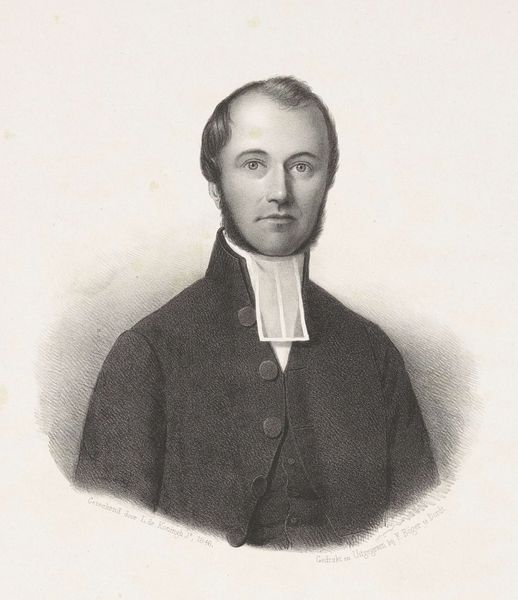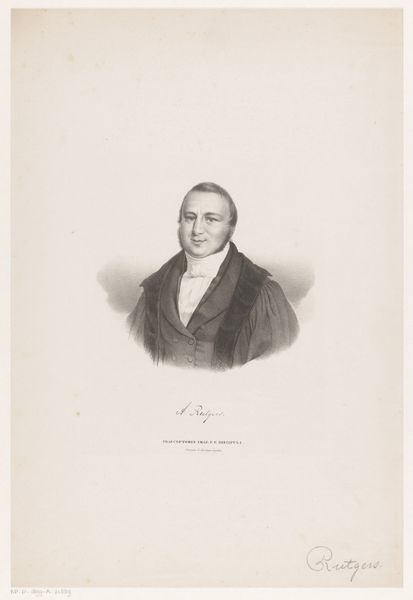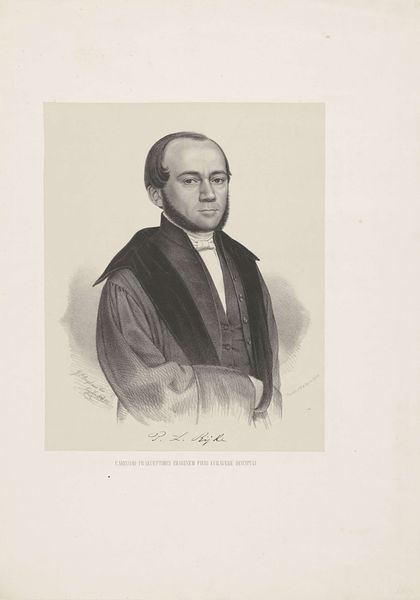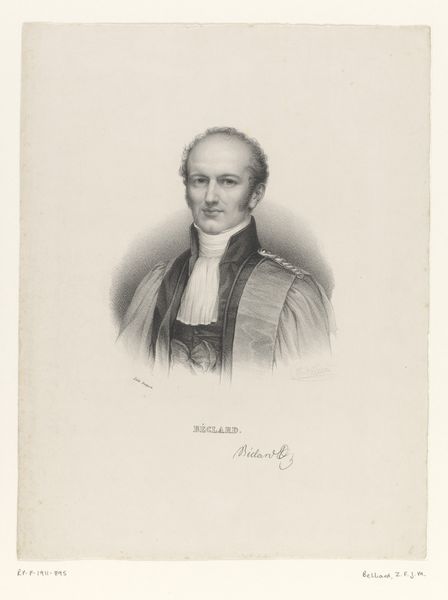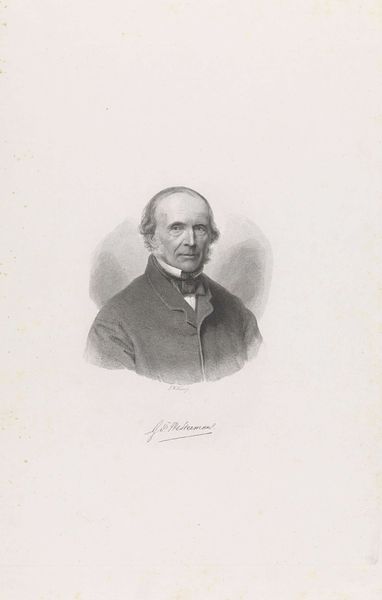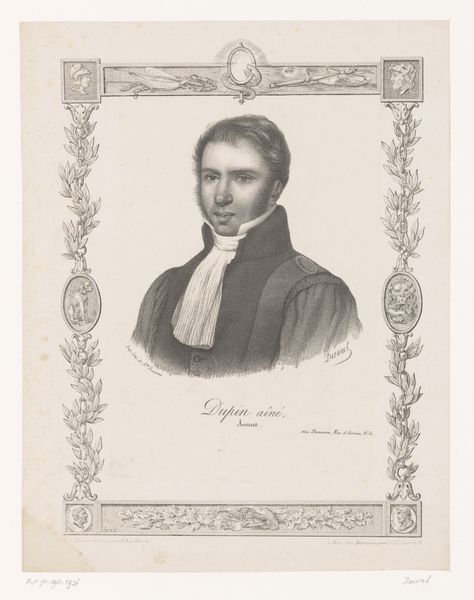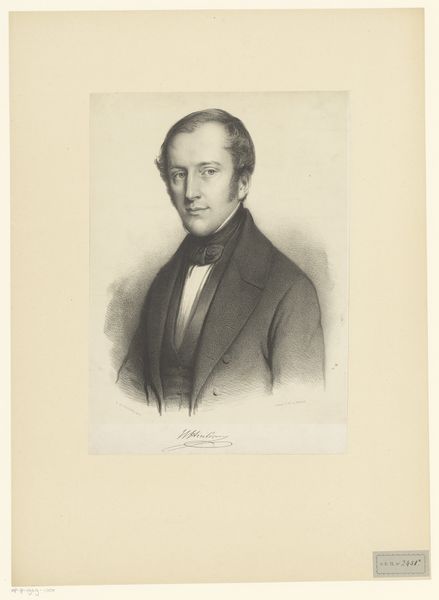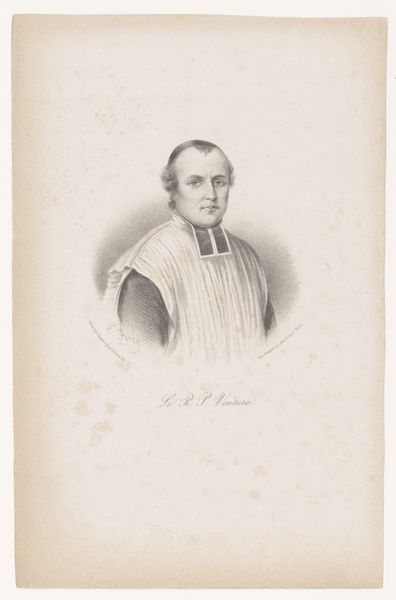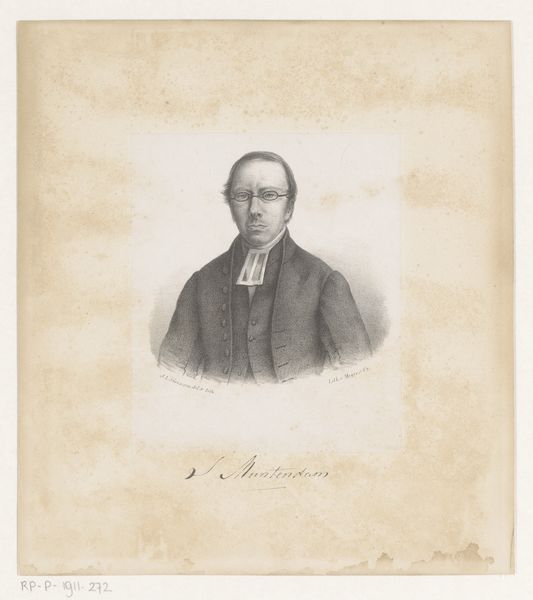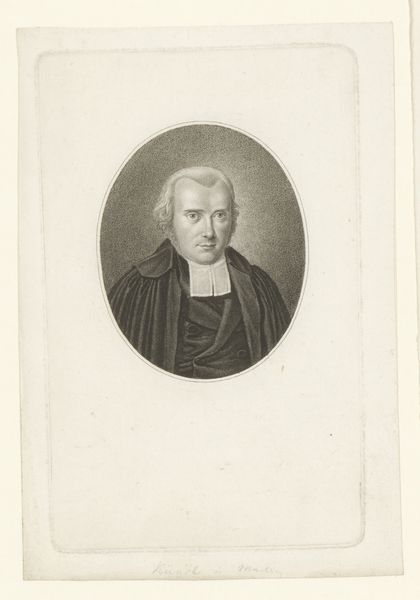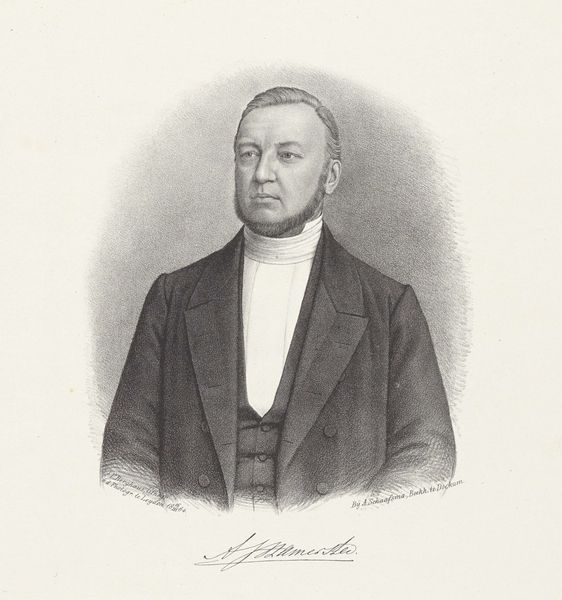
Dimensions: height 510 mm, width 370 mm
Copyright: Rijks Museum: Open Domain
Editor: This is Leonard de Koningh’s "Portret van Jacob Cornelis van Marken" from 1851, a pencil drawing. It feels very formal and proper, the man's attire and expression suggesting a person of importance. What can you tell me about this work, considering its historical and cultural context? Curator: Well, consider the rise of the bourgeoisie in the 19th century. Portraiture became a key way for this class to assert their status and project a certain image of respectability. How does de Koningh use the conventions of portraiture to do just that? Editor: I see how the careful details in his clothing and facial features contribute to that sense of respectability, it is clearly not just a casual sketch. Do you think the artist is trying to convey something beyond social standing? Curator: Precisely. Notice the subtle details: his controlled expression, the somber colors, the meticulous rendering. This image isn't just about recording a likeness, is it? It's about constructing an ideal. Who do you think this person might be, and how might his profession impact how he wanted to be seen? Editor: Given the attire, he might be a clergyman. And perhaps he wished to project an image of piety and serious contemplation. Curator: Exactly! The politics of imagery are in play here. De Koningh understands that this image isn’t just art, it’s a form of communication shaping public perception and solidifying power structures. Were images distributed more democratically than painted portraits at the time? Editor: Good point! I hadn't considered that prints made portraiture more accessible and widened its impact. It feels less about the individual Jacob Cornelis van Marken and more about what he represented within the society of the time. Thanks for that insight! Curator: It is these historical dimensions that really unlock the painting, don't you agree?
Comments
No comments
Be the first to comment and join the conversation on the ultimate creative platform.
